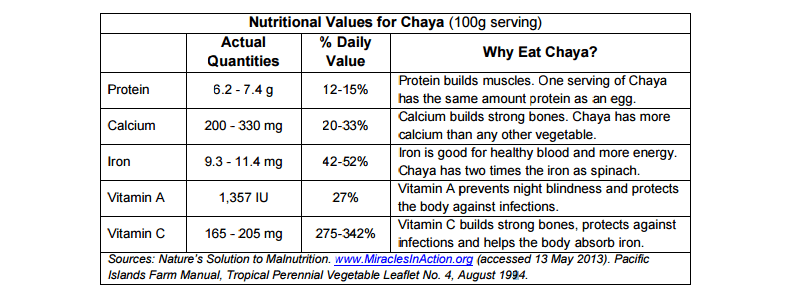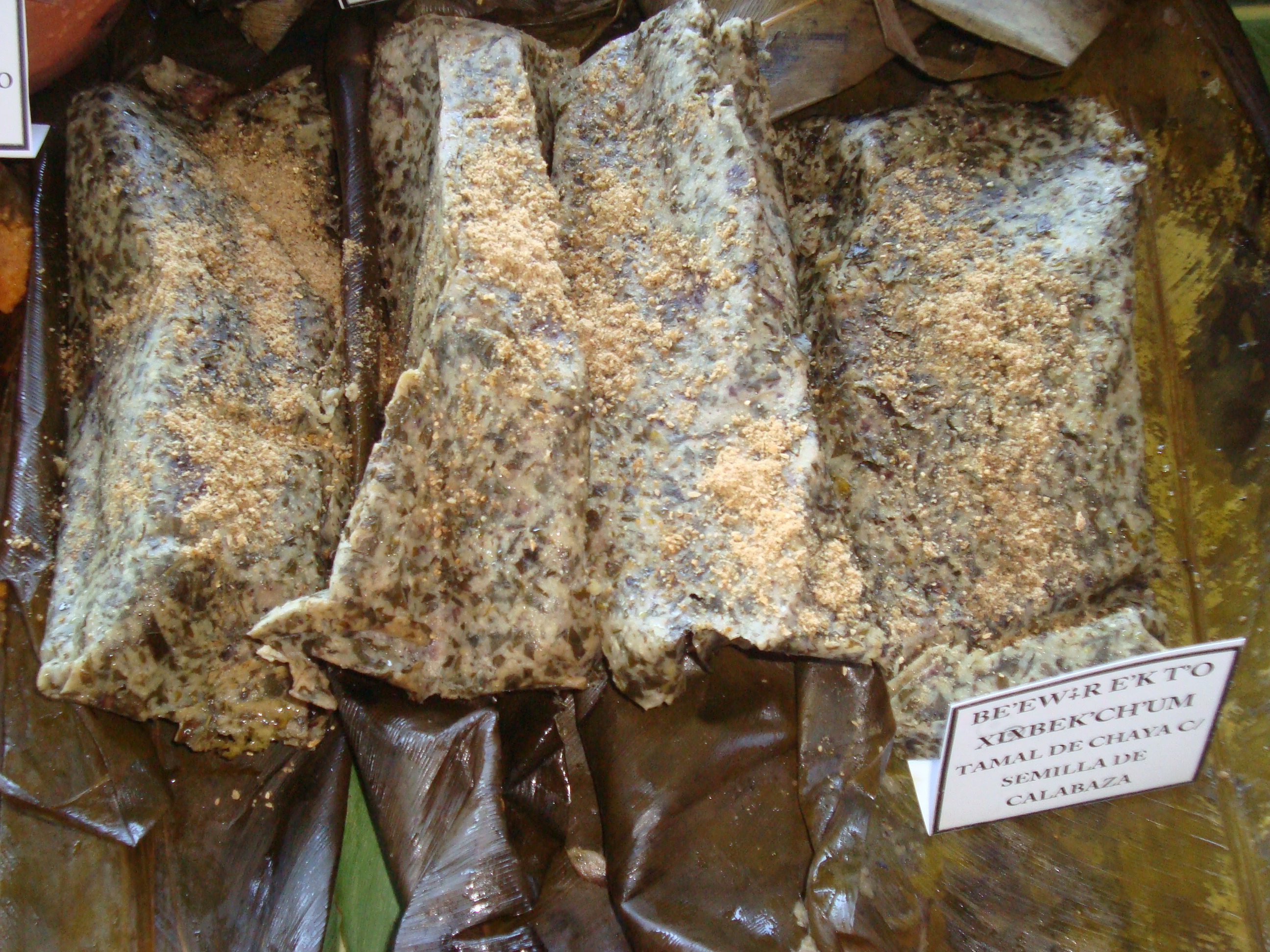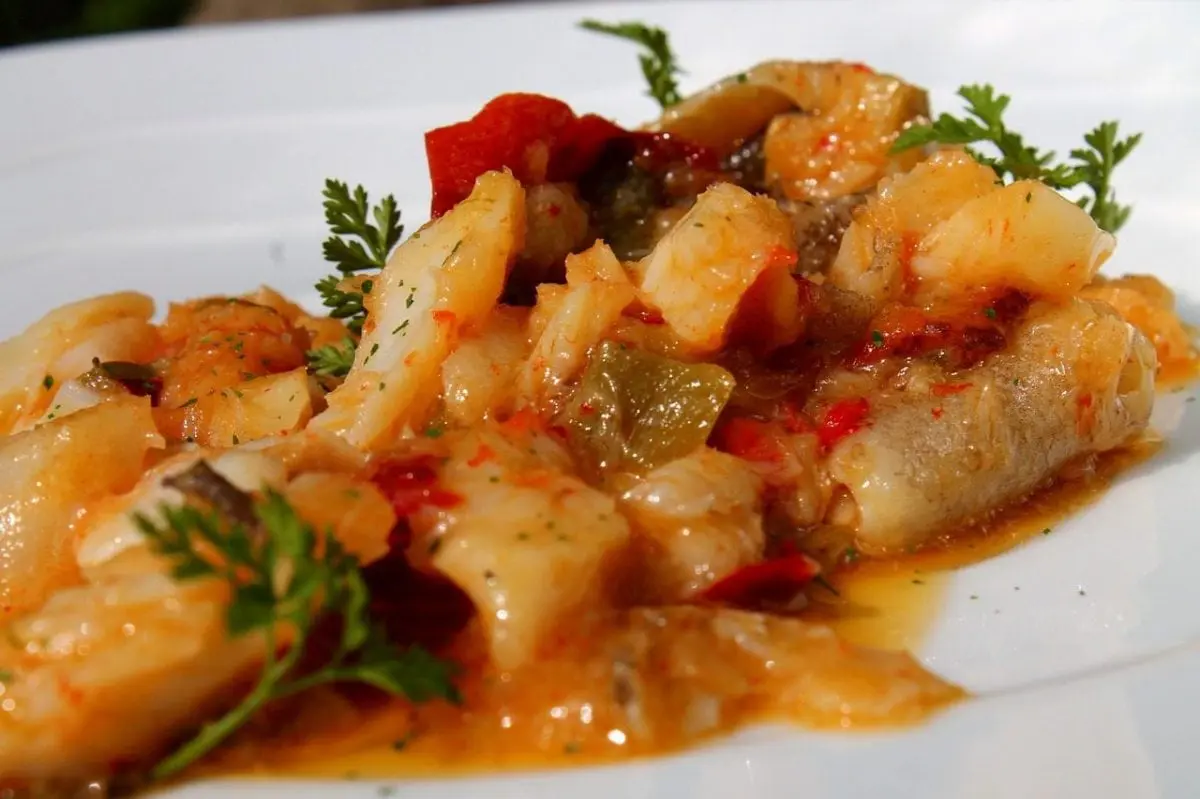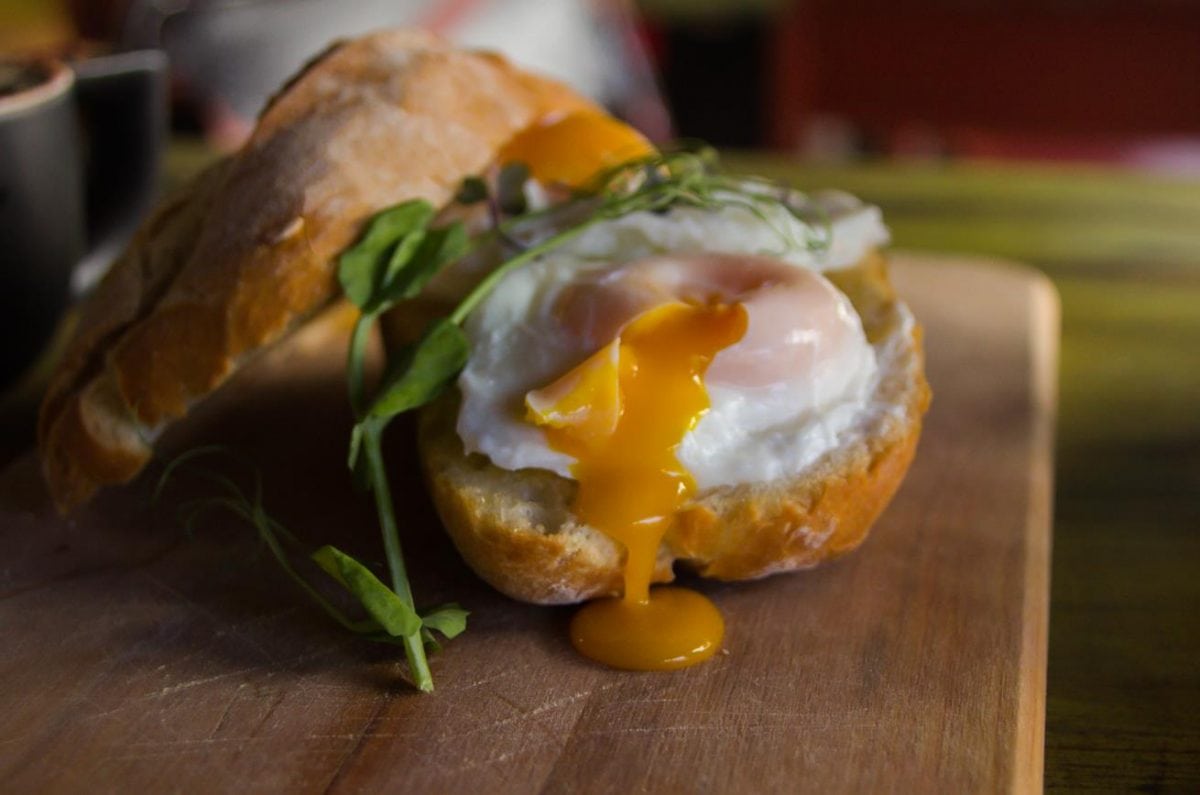Chaya: The Superfood & Miracle Mayan Spinach
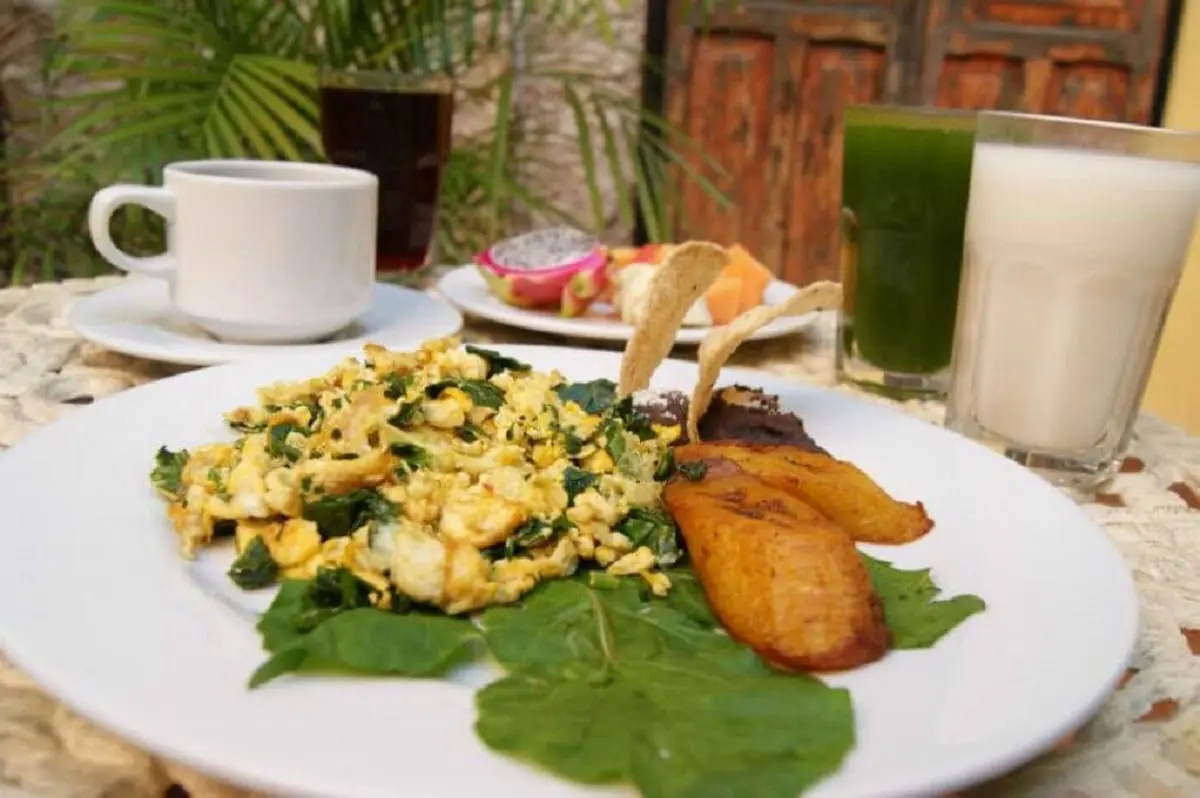
Have you ever heard of the chaya plant?
It’s one of my favorite additives for both food and drinks, and can be found at diverse Mexican restaurants in Playa del Carmen.
Although it grows in different regions of the tropics, not too many people are familiar with this superfood outside of the Yucatan Peninsula and Central America.
Here’s why it’s so special.
What Is Chaya?
By Frank Vincentz – Own work, CC BY-SA 3.0, Link
Cnidoscolus aconitifolius.
Now say it backward.
Or, if you prefer to keep it easy, just call it chaya (Chai-yah), a.k.a. tree spinach.
Chaya is a plant native to the Yucatan Peninsula and the state of Tabasco.
While it can be found in other parts of the continent such as Central America, Cuba, and Puerto Rico, chaya is still a relatively unknown plant species to most people.
An ancient food source for the Maya, chaya may just turn out to be a superfood of the future thanks to its vitamin-rich content and the ease with which and can be cultivated and regenerates.
Chaya Health Benefits
De Frank Vincentz – Trabajo propio, CC BY-SA 3.0, Enlace
There are many benefits to drinking and eating chaya.
For generations, this noble and abundant plant has been used as a food source and medicinal plant of the Maya.
According to the USAID, chaya is rich in essential nutrients:
Moreover, chaya it said to have the following health benefits:
- Improves blood circulation
- Helps digestion
- Improves vision
- Prevents varicose veins and hemorrhoids
- Lowers cholesterol
- Helps reduce weight
- Prevents coughs
- Augments calcium in the bones
- Decongests and disinfects the lungs
- Prevents anemia
- Improves memory and brain function
- Combats arthritis
- Improves glucose metabolism and prevents diabetes
Eating & Drinking Chaya
De Alfonsobouchot – Trabajo propio, CC BY-SA 3.0, Enlace
Not only is chaya healthy, it’s also tasty.
But first, a word of caution.
Raw chaya leaves contain hydrocyanic acid.
In other words, they are considered toxic.
Cooking the leaves for at least 3-5 minutes, however, removes the toxins and makes chaya safe to eat.
That said, chaya is considered safe in small portions, and is often consumed raw in natural juices.
Finally, chaya should never be cooked or stored in aluminum foil as it can produce a toxic reaction.
Chaya Recipes
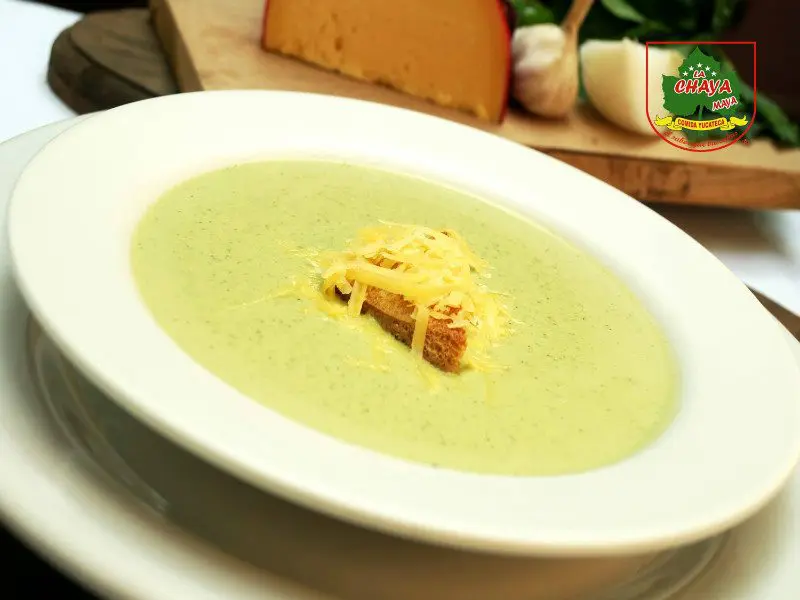
Credit: http://www.lachayamaya.com/index.html
Taking into consideration the need to cook the chaya before preparing it, here are a few of the many recipes that are made with chaya leaves.
- Sautéed chaya
- Scrambled eggs with chaya
- Cream of chaya soup
- Chaya juice
Sautéed chaya recipe via Los Dos Cooking School
8-10 servings
INGREDIENTS
• 2 Tbs. (45 ml) olive oil
• 4 oz. (114g) slab bacon, cut into large dice
• 1 large red onion
• 6 cloves garlic, peeled and finely chopped
• 1 large red bell pepper, seeded and diced
• 8 cups (2 liters) chaya leaves, thick stems removed and coarsely chopped (Substitute: spinach, Swiss chard, kale)
• Salt and pepper, to taste
DIRECTIONS
In a large skillet, heat olive oil and bacon until bacon is cooked. Remove bacon and set aside to drain. Reduce heat and add onion, garlic and bell pepper and cook until softened. Add chaya and cover. Cook 20-25 minutes or until chaya is tender, stirring occasionally. Return bacon to skillet and toss to incorporate. Check seasonings and serve.
Chaya with scrambled eggs recipe courtesy of Mexico in My Kitchen
1 serving
INGREDIENTS
2 teaspoons of vegetable oil
2 Tablespoons of white onion, finely chopped
1/2 cup tomato, chopped
1/3 cup Chaya, cooked and chopped
2 eggs
Salt to taste
DIRECTIONS
1. Wash Chaya leaves and place them in a pot with cold water over medium high heat. Simmer for 15 to 20 minutes. The chaya leaves will keep their bright green color. Remove from pot, drain and chop to cook.
2. Heat a medium-sized non-stick frying pan over low heat. Add the oil, once it is hot add the onion and cook for a couple of minutes.
3. Stir in the chopped tomato and cook for a minute and then add the chopped chaya leaves. Sauté for two more minutes.
4. Crack the eggs and add to the pan, stir and season with salt to taste. Cook until desire doneness.
Serve with beans, fried plantains or sliced avocado and warm corn tortillas.
Cream of chaya soup recipe via Food.com
INGREDIENTS
2 servings
20 leaves, chaya (tender, washed)
2 cups milk (whole make it nice and rich)
4 leaves basil
1 garlic clove, crushed
1 small onion, diced
1 cup vegetable bouillon (chicken OK)
Pepper
Salt, to your taste
DIRECTIONS
Place Chaya leaves, chopped onions and crushed garlic in a pot with the bouillon and cook for two minutes or until leaves are blanched (use mid-heat).
Add milk and let it cool.
Use a stick blender mix to a smooth velvety texture the remaining ingredients.
Cook another five to ten minutes or until mixture gets really hot but does not boil.
Serve hot.
Add the final touch by placing the unsweetened cream in a small bag; cutting the bag’s bottom tip, you can create a lovely design atop your served soup bowls.
For a zesty taste, sprinkle a bit of crush dried red chili as well.
Or add a dab of sour cream.
Chaya juice recipe
As for a chaya juice recipe, also known as agua de chaya or chaya water, it’s pretty easy.
If you prefer to play it safe, boil the leaves 3 to 5 minutes before putting them in a blender together with the desired portions of pineapple, a dash of orange juice and lime juice as well as sugar to taste (citrus juices are alleged to neutralize the toxins found in raw chaya leaves).
However, to be honest, whether in a 5-star hotel or a local breakfast joint, chaya leaves for juice are normally just washed not cooked.
Important Note: Your medical decisions are yours and yours alone. When in doubt, always consult your physician.
After all, we may love chaya at PlayaDelCarmen.com, but that doesn’t make us medical experts.
Ready to plan your trip to the land of chaya?
The Playa del Carmen travel specialists will cook you up the best deals this side of the Caribbean.
Call them today toll-free at 888-537-9797!
Feature image courtesy of Chaya Maya Restaurant, Merida




